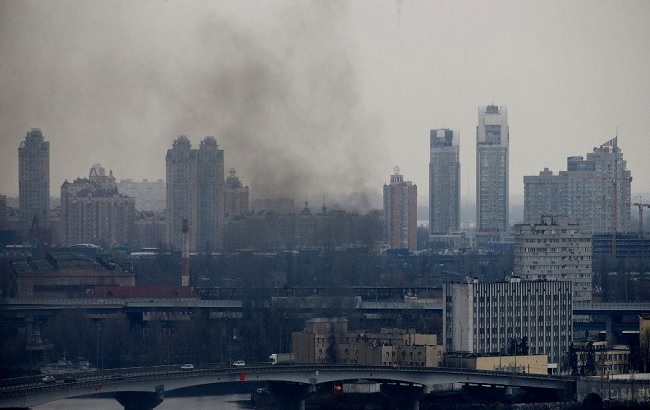Auckland: There’s a popular cartoon by Tom Toro that’s been doing the social media rounds since 2012, in which two historians sit in a book-lined library as one complains:
Those who don’t study history are doomed to repeat it. Yet those who do study history are doomed to stand by helplessly while everyone else repeats it.
As a historian, I don’t much subscribe to the histoire se répète (history repeats itself) school of thought. No two moments are ever “the same”. Context changes everything – and the complexities of context are as important to understanding an event as the potential similarities with another moment in time.
I find many of the historical analogies being bandied about over the war in Ukraine banal. There is nothing to be gained from equating Putin with Hitler or likening Russia’s invasion of Ukraine with Germany’s invasion of Poland in 1939.
But what is useful in studying past wars is that they help us understand what aspects of a current crisis might be worth asking critical questions about
In that sense, Toro’s cartoon is apposite, especially when it comes to interrogating our collective responsibility for the war in Ukraine and its victims. Is watching in horror as the war unfolds all we can do? What responsibilities do we have as non-belligerent “neutrals”?
Neutrals and non-belligerents
I’ve spent much of my academic career studying international systems and great power diplomacy, particularly in time of war. I’ve written several books about neutrality, peacemaking and avoiding war. My most recent (co-authored) title, Global War, Global Catastrophe, integrates the history of neutrals and non-belligerents into the global history of the first world war.
This research highlights the many ways in which governments and communities approach wars in which they’re not actively involved as belligerents. Neutrality is the formal term used for a state that chooses not to go war when other countries do.
While we rarely use the word “neutral” today to describe countries that are not fighting a war (preferring to reserve that term for non-aligned countries like Switzerland), in a legal sense everyone who remains non-belligerent in this conflict is neutral according to the laws of war.
Neutrals and non-belligerents feature in all international conflicts. Even in the age of collective security that evolved after 1918 and through the Cold War, there were always neutrals and non-aligned states.
But the world watching the war in Ukraine today is most akin to the 19th-century age of neutrality, when most wars were fought by a small number of states, while the rest opted out as neutrals, including many great powers.
Neutrality helped these wars stay localised and limited, preventing them turning into major conflicts involving more of the militarised world. Much like today, there were always more non-belligerents watching a war than belligerents fighting it.
Neutrality isn’t passive
This history reveals that neutrality was not (and cannot be) a value-neutral concept. Neutral countries and communities are never politically impartial or evenhanded in their response to a military conflict, even if they have legal obligations regarding the warring parties.
As such, sanctioning Russia and sending military equipment to Ukraine are not, on the face of it, anti-neutral acts – although they certainly send powerful messages to Russia about the limits of what the rest of the world will allow or endure over Ukraine.
As in the past, neutral countries and non-belligerent organisations and communities often take on a range of key responsibilities and actions to help alleviate the suffering of a war or bring it to an early close.
Neutral governments are often the mediators and arbitrators of international crises and offer safe spaces for the warring parties to negotiate a solution. They also offer humanitarian support for the victims of war, including front-line medical care and havens for refugees.
And since all wars are also information wars, independent media sources play an influential role: unmasking the extreme violence of war, establishing how the watching world understands what the war is about, and determining which belligerent is perceived as being on the side of “right”.
Neutrality and ending war
Neutrals, then, actively determine what is at stake in a war. Winning the “hearts and minds” of the people watching as non-belligerents is therefore vitally important to the warring parties.
At the moment, Ukraine’s president, Volodymyr Zelenskyy, is doing an exceptional job of influencing the watching world’s expectations and framing what the invasion of Ukraine is about. He needs that global support to help set the terms of any peace negotiations with Russia.
Historians of warfare almost always fixate on the actions of those actually doing the fighting or falling victim to the violence of a war. Today, too, we seem fixated on understanding Russia and Putin and on explaining why Ukraine is so important.
But it’s as important to ask questions about the responsibilities and actions of the neutral and non-belligerent world – those of us watching the war unfold in real time – as it is to interrogate those of any warring parties.
Just as in the 19th century, neutral parties have a massive role to play in the conduct, outcome and terms of this war. Their assessments will help to determine how we understand the conflict in years to come.
Alongside asking serious questions about why Russia invaded Ukraine, we should therefore also train our mirrors on ourselves as non-belligerents. How are we shaping the contours of this conflict? How are we responding to it? Where are our responsibilities to bring its suffering to a successful and speedy close?
By Maartje Abbenhuis: Professor of History, University of Auckland
The Conversation
